An interview with the designer of mt, Koji Iyama The backbone of the world of mt
mt is the world's leading washi tape brand produced by Kamoi Kakoshi. We have collaborated with mt to create three items for the 2020 Hobonichi Techo lineup. Koji Iyama designs all the items and directs events, such as 'mt expo', that are produced by mt, and he worked with us on this collaboration. We asked him how he goes about creating items at mt and the techo covers for our 2020 techo lineup.
(Part 2)
Trust creates speed
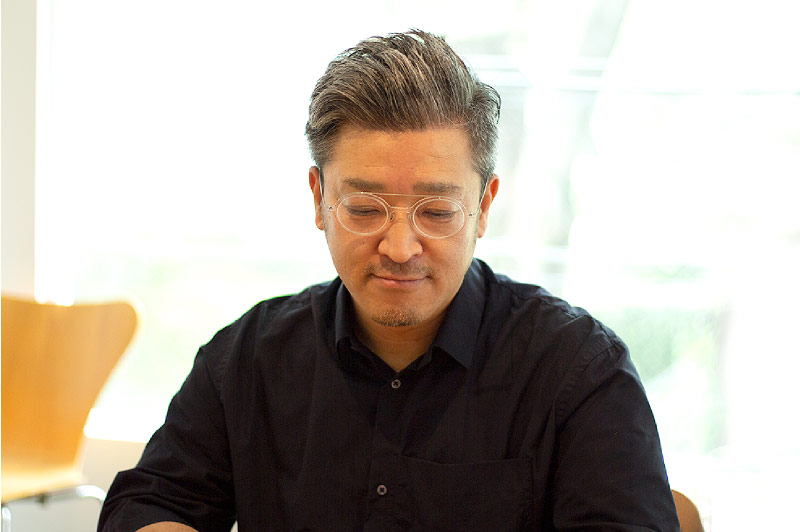
- Hobonichi
- May we ask how you started to work with mt?
- Iyama
- It's been 11 years since mt started, and as I told you before, mt initially started through the voice of three women who wanted an array of colors of masking tape because they loved them so much, at a time where they were mainly made for industrial use.
- Hobonichi
- Yes.
- Iyama
- One woman was a designer. At one point, when mt had a solid selection of colored washi tapes, she decided to put a stop to her career to focus on bringing up her child.
- Hobonichi
- So at that point, weren't there any patterned washi tapes?
- Iyama
- Only a limited selection.
One of the other members of the initial three worked at a variety goods shop. The owner of the shop graduated from an arts university and happened to be an acquaintance of mine. So, when mt began their search for a new designer, she introduced me to them. As a graduate of an arts university, she probably had a lot of designer friends, but I guess I came to her mind instantly.
- Hobonichi
- That person made such a great decision!
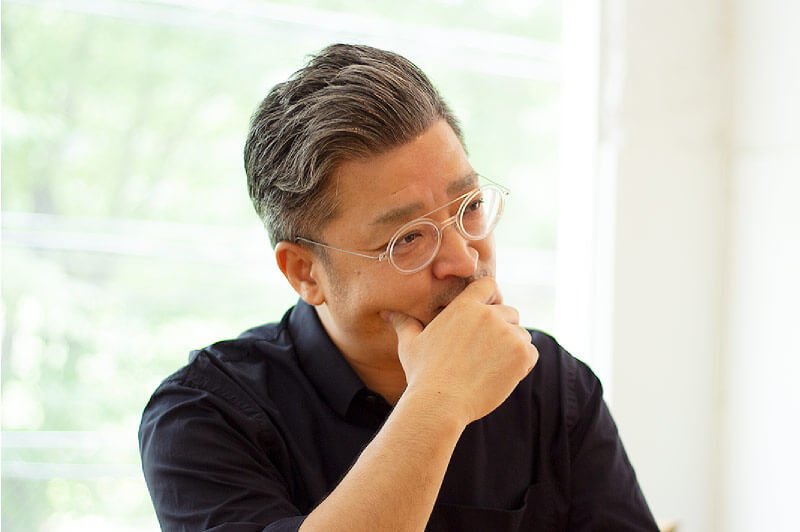
- Iyama
- At that time, I had no prior knowledge of mt, but I was impressed when I heard how the brand came to be. I went to meet Kamoi to hear more about it right away, and found out how he handles product-making with care. The person in charge — one of the current two heads of mt – is also an amazing person. As we talked, I immediately had some designs come to mind on the spot, and asked if I could see the Kurashiki factory where the products are actually made. And before I knew it, I started to work with them.
- Hobonichi
- As we worked together, I was amazed by the relationship you have with the people at Kamoi Kakoshi. You rely on each other and make decisions on the spot.
Iyama:
It may seem like that now, but I bet at first they thought I was fishy (laughs). We all laugh about it now, but still, to this day people ask me, “Do you remember how you wore that lime green coat on the first day?”
- Hobonichi
- Quite... a unique choice, I guess.
- Iyama
- They'd say “here he comes!”
- Hobonichi
- I guess when someone who oozes the basic characteristics of a designer suddenly comes to your office, you'd sort of brace yourself.
- Iyama
- I'm sure they did. But even so, they came to my exhibitions and talk shows, saying they wanted to know more about me. Likewise, I went to their factory at quite an early stage. Normally, I think that trust is built through continuous success that resulted from working with each other, but in our case, we were able to rely on one another as we both actively tried to get to know each other, despite not having results yet. I believe this was crucial for us.
- Hobonichi
- Indeed.
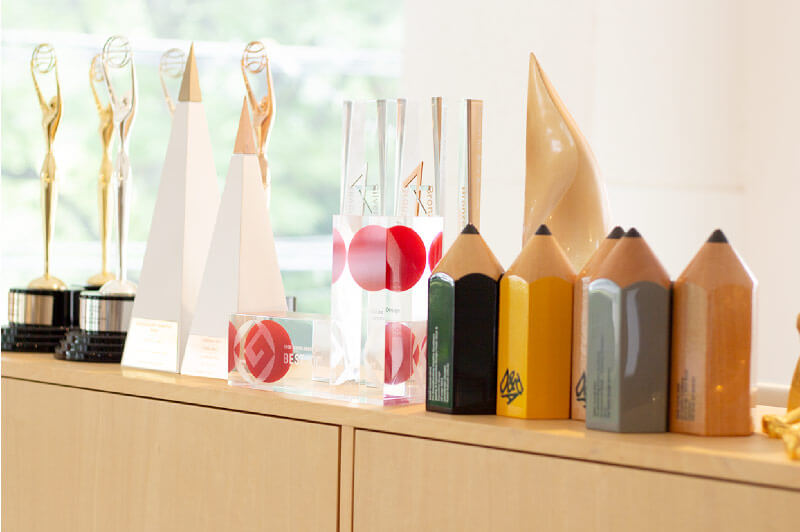
- Iyama
- Right after I took on the role of the designer, I requested quite a few changes, like changing the logo and packaging, and creating patterned washi tapes as well. We were able to work together cohesively from the start, and we even went forward with holding an event that I proposed.
I explained in detail the meanings behind each idea to show they weren't decisions made at random, and the people at Kamoi were cooperative in trying to understand why I was proposing all these ideas.
- Hobonichi
- I see.
- Iyama
- Normally, projects take a while for it to go through, starting from the presentation, showing them a report, and then sleeping on it to make a decision on whether it should go through. But at mt, I'd just talk my ideas through, and they'd immediately be supportive of moving the project forward.
- Hobonichi
- That's amazing. I think that's a lot of people's ideal. Do you think speed is key in making a lot of the projects at mt possible?
- Iyama
- I think that's part of it, yes. Speed is important for the projects at mt. As the number of events we hold and products are on the rise, it's crucial that we minimize the amount of time spent on a product. I'm glad we've found a way to work efficiently.
- Hobonichi
- It seems more and more like it as I hear your story.
- Iyama
- Actually, I've just come back from a business trip with mt for 10 days, visiting various countries. I travel so much more with the people at mt than I do with any of my clients. (Laughs)
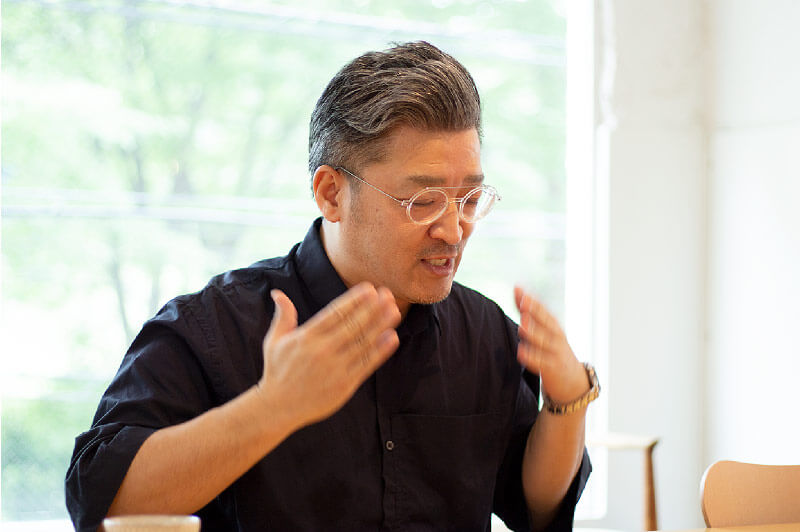
- Hobonichi
- Do you personally use a techo?
- Iyama
- I do... But I kind of use it more as a notebook, to be honest. I keep my schedules in my iPhone. Having said that, I do have a history with planner books...
- Hobonichi
- That sounds interesting. Could you tell us more about it?
- Iyama
- I used to use a normal monthly planner. But my schedules started to overflow from the daily grid of the monthly calendar, and I had to write in super small handwriting.
- Hobonichi
- Is it because you got busier?
- Iyama
- Exactly. So to solve my problem, I started printing out a planner layout that I made for myself, and stuck that onto a plain notebook. I'd fold the paper in thirds, making it easy to open and close. I'd endlessly print and stick, print and stick...
- Hobonichi
- Wow, you've created your own special planner!
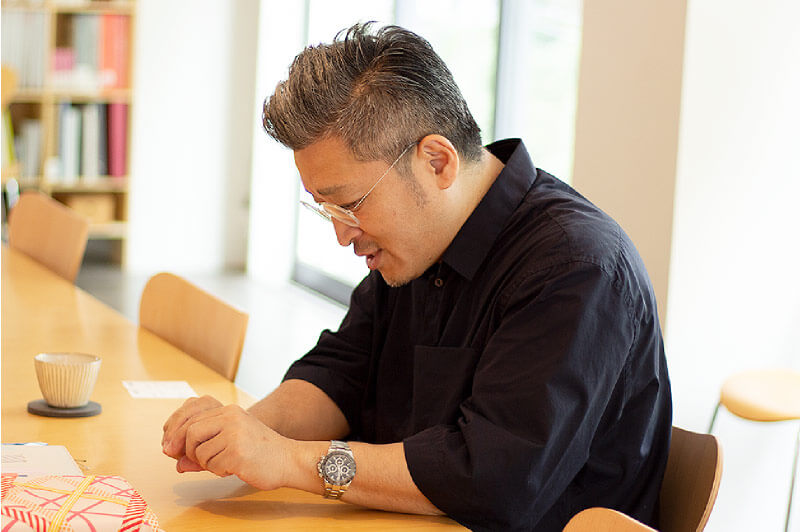
- Iyama
- As I continued to make my planner book, I started to think about the size of the page, and how thick is was, so I ended up sticking three notebooks together to make it my preferred thickness, cutting the ends off to change its size. At that point, I couldn’t even tell where all this effort was going.
- Hobonichi
- That's so funny! (Laughs) To think it started off as a planner you wanted to make life easier.
- Iyama
- It took so much of my time, and I started to wonder what I was doing. Around the same time, we started to share everyone's schedule at the office on a web service, so I decided to put my schedules in there, too.
- Hobonichi
- That does seem like a better idea, hearing your story. (Laughs)
- Iyama
- Giving up my planner-making didn't mean I didn't want to jot down notes, so I started to carry a small notebook around, and I've stuck to that ever since.
- Hobonichi
- So you still write memos by hand.
- Iyama
- That's right. I only write down things that I must not forget, though. I also draw rough sketches to visualise my ideas, but that's only at the initial stage, when there aren't even prototypes.
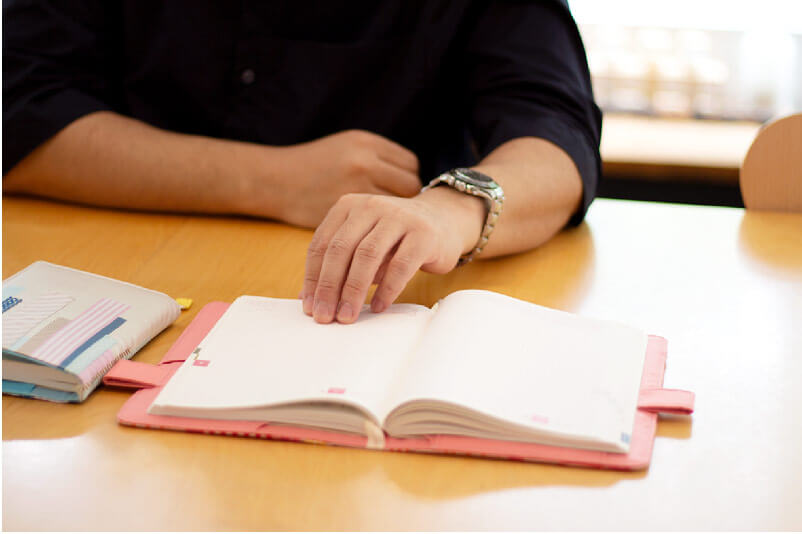
- Hobonichi
- When you design your products, do you first draw a sketch?
- Iyama
- Normally I start by writing down words. I write down all the aspects I can think of.
- Hobonichi
- Words, you say?
- Iyama
- Yes. For example, if someone asked me to make a container, I'd start off by writing down what I think a container is. I would also jot down the history of the client's company, and how they aspire to evolve in the future. As I write, I sort of take in and absorb all these aspects, and then start to see what it is that should be created. After all that, in many cases, I finally come up with a specified design.
- Hobonichi
- It's quite later on that your ideas start to form a shape.
- Iyama
- I think it would be great if I could immediately shape my ideas, but it seems that I'm not that kind of person. (Laughs) There are times when I choose to start off by drawing and visualizing my ideas, but I usually stick to words.
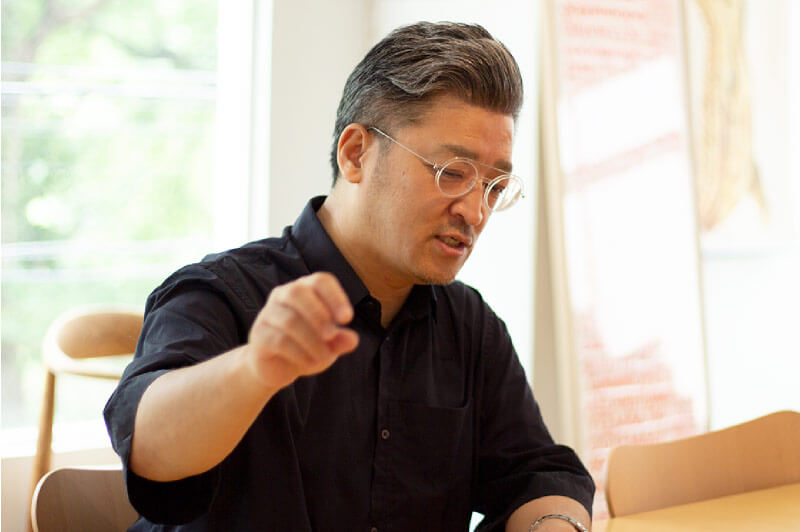
- Hobonichi
- That's fascinating to hear. I guess that's why items and events at mt have a solid concept.
- Iyama
- That could be.
- Hobonichi
- I keep on thinking how amazing the person who thought to bring you to mt was. If it weren't for you, I think mt wouldn't have expanded in the way it has.
- Iyama
- I agree. Not to sound obnoxious by saying so myself, but I think it was a sound decision. There are so many designers out there. On top of that, everyone distances themselves from cuteness to a different extent. You don’t even know whether someone actually “feels'” that something is cute, especially with men. For that reason, I think it was significant having not assigned a female designer.
- Hobonichi
- I see where you're getting at. As a male designer,you’ve got a universal approach that appeals to both casual, occasional users and hardcore fans.
- Iyama
- Things would've been different if someone who perfectly fits the image of washi tape designed the products. A lot of people are surprised to hear that the washi tapes are designed by a man, and not a woman. (Laughs) In fact, a lot of the workers at Kamoi Kakoshi are middle-aged men, too. But I guess that gap between the image of mt and the actual people who create it adds to the brand's charm.
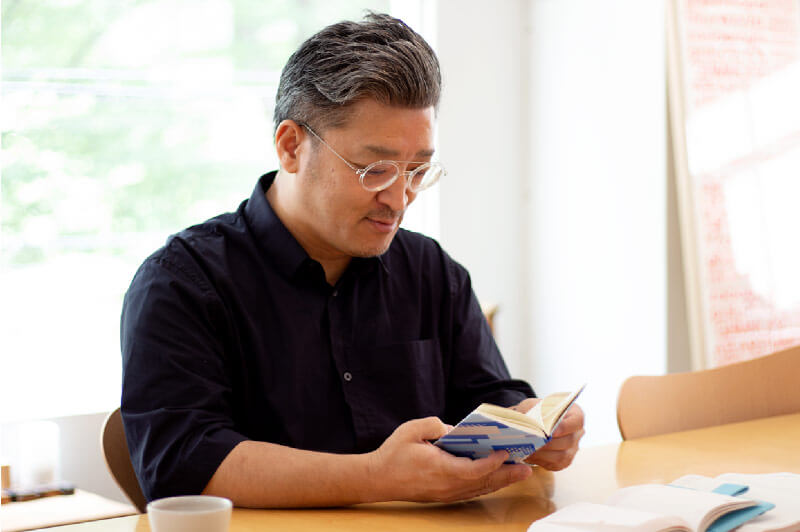
- Hobonichi
- Thank you so much for your time today, I really enjoyed it.
- Iyama
- Thanks to you too. I hope many people enjoy the items we collaborated on.
(End)










